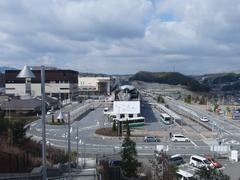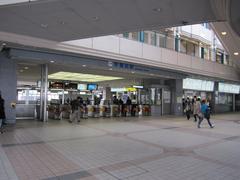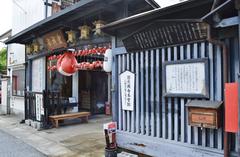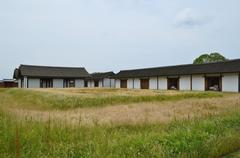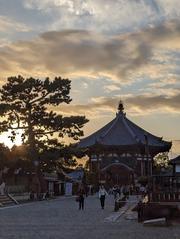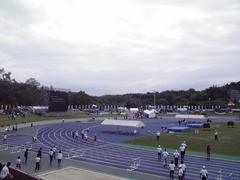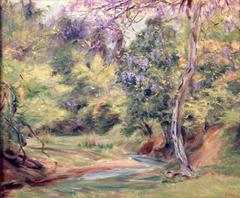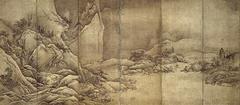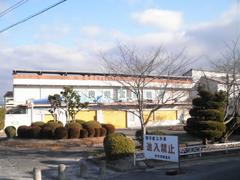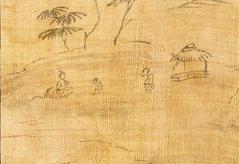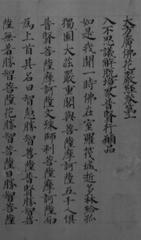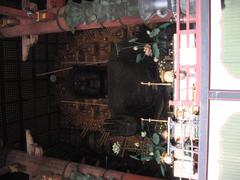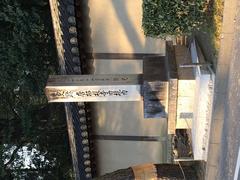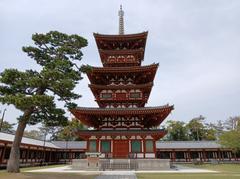
Nara National Museum: Visiting Hours, Tickets, and Comprehensive Guide to Nara Historical Sites
Date: 14/06/2025
Introduction
The Nara National Museum, nestled in the scenic expanse of Nara Park, is at the heart of Japan’s Buddhist art heritage and its rich ancient legacy. Founded in 1889 (and opened to the public in 1895), the museum was established to preserve invaluable Buddhist artifacts following the anti-Buddhist Haibutsu Kishaku movement. Today, it serves as a vital gateway to understanding Japan’s spiritual, artistic, and imperial evolution, with a location surrounded by iconic sites such as Tōdai-ji, Kōfuku-ji, and Kasuga Taisha Shrine (Nara National Museum - About; Facts and Details: Nara History).
This guide provides everything you need for a rewarding visit: essential information about visiting hours, ticketing, accessibility, museum highlights, and practical tips to explore Nara’s historical sites.
Table of Contents
- The Museum’s History and Purpose
- Nara: Japan’s Ancient Capital
- Nara National Museum Visiting Hours & Ticket Information
- Museum Architecture and Evolution
- Collection Highlights and Signature Exhibitions
- Accessibility, Navigation, and Visitor Services
- Nearby Historical Sites and Attractions
- Practical Travel Tips
- Sample Itineraries
- Frequently Asked Questions (FAQ)
- Conclusion & Further Resources
The Museum’s History and Purpose
Established as the Imperial Nara Museum in 1889 and opening to the public in 1895, the Nara National Museum was created to safeguard Buddhist art endangered by earlier anti-Buddhist sentiment. The Japanese government’s commitment to cultural preservation led to the systematic cataloguing and conservation of priceless religious treasures from Nara’s temples and shrines (Nara National Museum - About).
Its dual mission remains: to conserve and research masterpieces from the region’s temples and to provide public access to Japan’s Buddhist and artistic heritage.
Nara: Japan’s Ancient Capital
Nara was Japan’s first permanent capital (established in 710 CE), marking the cradle of national culture, Buddhist tradition, and imperial grandeur. The city’s historical monuments—including Tōdai-ji, Kōfuku-ji, and Hōryū-ji—are central to the development of Japanese architecture and spirituality (Facts and Details: Nara History). Nara’s UNESCO World Heritage sites serve as living testaments to its global significance.
Nara National Museum Visiting Hours & Ticket Information
- Opening Hours: Generally 9:30 AM–5:00 PM (last entry 4:30 PM). Extended hours on some Saturdays and during special exhibitions. Closed Mondays (or the next day if Monday is a national holiday), and New Year holidays (Nara National Museum Exhibition).
- Admission: Standard adult tickets are about 520–700 yen. Discounts for students, children, and groups. Special exhibitions (e.g., Shosoin Exhibition) may require separate or higher-priced tickets (Nara National Museum Official).
- Free Admission: Certain days, such as International Museum Day and the museum’s founding anniversary, offer free entry (narahaku.go.jp).
- Tickets: Purchase onsite or in advance online to avoid queues.
- Guided Tours: Free volunteer guides (some multilingual) and audio guides are available (Japan Travel).
Museum Architecture and Evolution
Original Main Hall
Designed by Katayama Tokuma and completed in 1894, the Main Hall is the first Western-style building in Nara, blending Meiji-era European elements with Japanese needs for light and climate resilience. It is now the Nara Buddhist Sculpture Hall, designated as an Important Cultural Property (Nara City Tourism Association).
East and West Wings
- West Wing (1972): Designed by Junzo Yoshimura, houses the annual Shosoin Exhibition. Features advanced preservation and climate control (3D Archi Designer).
- East Wing (1997): Also by Yoshimura, provides additional space for Buddhist art displays. Both wings link to the Main Hall via a central entrance and underground corridors, ensuring seamless visitor flow (Art Tourism).
Collection Highlights and Signature Exhibitions
- Permanent Collection: Over 1,900 items, including 13 National Treasures and 114 Important Cultural Properties. Focus on Buddhist sculptures (Asuka–Kamakura periods), paintings, ritual bronzes, and religious artifacts (Art Tourism).
- Shosoin Exhibition: Annual autumn event showcasing treasures from the Shosoin Repository at Tōdai-ji—rare objects not normally on display (Nara City Tourism Association).
- Ritual Bronzes Gallery: Features ancient Chinese bronzeware, highlighting cultural exchange and the roots of Japanese Buddhist art (Nomadasaurus).
- Special Exhibitions: Rotating showcases on architectural history, Buddhist iconography, and national treasures (tsumugu.yomiuri.co.jp).
Accessibility, Navigation, and Visitor Services
- Accessibility: Fully wheelchair accessible; elevators, ramps, accessible toilets, and wheelchair rental are available (Visit Inside Japan).
- Navigation: Clear English signage; underground corridors connect all buildings, allowing easy, weather-protected movement (Japan Travel).
- Amenities: Museum shop (catalogs, art books, unique crafts), café/restaurant, family-friendly facilities (diaper changing, baby chairs), and AEDs for emergencies (Art Tourism).
- Multilingual Support: English signage and explanations throughout; English-language website for visitor info (Nara National Museum Official).
Nearby Historical Sites and Attractions
Nara Park
Adjacent to the museum, Nara Park is famed for its 1,200+ sika deer—considered sacred and friendly to visitors (deer crackers available for purchase). The park is also known for cherry blossoms in spring and autumn foliage (samleetravel.com; wildtrips.net).
Tōdai-ji Temple
A UNESCO World Heritage Site and home to the Great Buddha Hall, housing Japan’s largest bronze Buddha statue. Allow 1–2 hours for a full visit (planetware.com).
Kasuga Taisha Shrine
Founded in 768 AD, this Shinto shrine is celebrated for its lantern-lined paths and biannual Mantōrō lantern festivals (wildtrips.net).
Kōfuku-ji Temple
Features a five-story pagoda and Central Golden Hall; its museum displays Buddhist art that complements the Nara National Museum’s collection (samleetravel.com).
Yoshiki-en & Isui-en Gardens
Traditional landscape gardens within walking distance, ideal for a peaceful stroll (bucketlist2life.com).
Others
- Nara Prefecture Museum of Art: Contemporary and traditional Japanese art (planetware.com).
- Heijō Palace Site: Former imperial palace grounds with reconstructions and museums (washokuclub.com).
- Naramachi District: Edo-period merchant quarter with preserved townhouses and boutique shops (samleetravel.com).
Practical Travel Tips
- Access: 15-minute walk from Kintetsu Nara Station, 30 minutes from JR Nara Station; city buses stop at Himuro Shrine/National Museum (Japan Guide).
- Best Seasons: Spring and autumn for mild weather and scenic beauty; expect crowds during the Shosoin Exhibition and weekends.
- Family-Friendly: Baby changing and child-friendly facilities are available.
- Luggage: Coin lockers at the museum and train stations.
- Deer Etiquette: Feed deer with care—keep crackers hidden until feeding and show empty hands when finished (magnificentworld.com).
- Local Food: Try local specialties such as kuzumochi and narazuke at nearby eateries.
- Weather: Summers are hot/humid, winters are chilly—dress appropriately and stay hydrated (samleetravel.com).
- Guided Tours: Walking and cycling tours offer deeper insight (samleetravel.com).
- Travel Insurance: Recommended for all travelers.
Sample Itineraries
- Half-Day: Nara National Museum → Nara Park → Tōdai-ji Temple.
- Full-Day: Add Kasuga Taisha Shrine, Kōfuku-ji Temple, and Yoshiki-en or Isui-en Garden. Explore Naramachi for Edo-period culture (bucketlist2life.com).
Frequently Asked Questions (FAQ)
Q: What are the Nara National Museum’s visiting hours?
A: 9:30 AM–5:00 PM (last entry 4:30 PM); closed Mondays (or the following day if Monday is a national holiday).
Q: How much are tickets?
A: Generally 520–700 yen for adults; special exhibitions may cost more.
Q: Is the museum wheelchair accessible?
A: Yes, with full barrier-free facilities.
Q: Are guided tours available?
A: Volunteer and audio guides are available, some in foreign languages.
Q: Can I take photos inside?
A: Photography is generally allowed in permanent galleries (no flash); restricted in special exhibitions.
Q: How do I get there?
A: Short walk from Kintetsu or JR Nara stations, or via city buses.
Q: Are there combined tickets for nearby sites?
A: Some combination tickets are available—check with official tourism sources.
Conclusion
The Nara National Museum is an essential destination for anyone interested in Japanese art, history, and culture. Its extraordinary collections, accessible facilities, and proximity to UNESCO World Heritage Sites ensure a rich and immersive experience. Plan your visit during spring or autumn for the best scenery, and use this guide to make the most of your trip. For the latest updates, always refer to the official museum website.
Don’t forget to explore Nara Park, nearby temples, and the charming Naramachi district for a comprehensive journey through Japan’s ancient capital. Download the Audiala app for up-to-date museum info, digital tours, and more cultural insights.
References and Further Reading
- Nara National Museum - About
- Facts and Details: Nara History
- Nara National Museum Exhibition
- 3D Archi Designer
- GLTJP
- Nara City Tourism Association
- Art Tourism
- Japan Travel
- Samlee Travel
- Wildtrips.net
- Planetware
- Tsumugu Yomiuri
- Asahi.com
- Japan Guide
- Nomadasaurus
- Visit Inside Japan
- bucketlist2life.com
- magnificentworld.com
- washokuclub.com
- blog.japanwondertravel.com
- TravelSetu
- narahaku.go.jp

